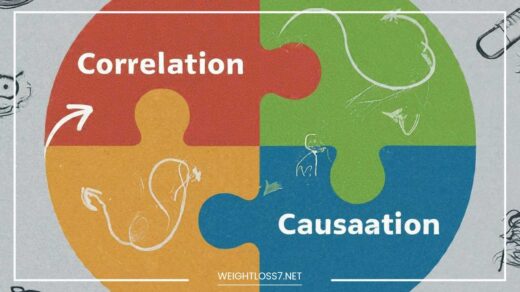How to Lose Weight Fast in 2 Weeks

2 Week Weight Loss Plan
How to Lose Weight Fast in 2 Weeks: A Comprehensive Guide
Losing weight quickly is a common goal, fueled by upcoming events or a desire to jumpstart a healthier lifestyle. While sustainable weight loss focuses on long-term habits, effective strategies can help you shed pounds in just two weeks. This guide explores how to lose weight fast while prioritizing your health.
Understanding Quick Weight Loss: Expectations vs. Reality
Before diving in, it’s crucial to understand that rapid weight loss often involves losing water weight, glycogen stores, and some muscle mass alongside fat.
While you might see a significant drop on the scale, maintaining these results requires continued effort. Here’s a breakdown of what to expect:
- Water Weight: This is the initial weight loss you’ll see, and it’s not fat loss. When you restrict calories, your body releases stored water. This can be several pounds in the first week.
- Glycogen Stores: The body stores carbohydrates as glycogen, primarily in the muscles and liver. When you restrict carbs, your body breaks down glycogen for energy, leading to weight loss.
- Muscle Mass: During calorie restriction, some muscle loss can occur. This is why it’s important to prioritize protein intake and strength training to minimize muscle loss.
Remember: Quick weight loss is a temporary solution. Long-term success requires sustainable changes to your diet and exercise habits.
Key Strategies for Shedding Pounds in Two Weeks
1. Create a Calorie Deficit:
This is the foundation of weight loss. You need to burn more calories than you consume. Here’s how to determine your ideal calorie intake:
- Basal Metabolic Rate (BMR): This is the number of calories your body burns at rest. Use online calculators to find your BMR based on age, weight, height, and gender.
- Daily Calorie Needs: Multiply your BMR by an activity factor (sedentary, lightly active, moderately active, very active) to estimate your daily calorie needs.
- Calorie Deficit: Aim for a deficit of 500-1000 calories per day. This can result in a weight loss of 1-2 pounds per week.
2. Prioritize Protein for Muscle Preservation and Satiety:
- Boosts Metabolism: Protein requires more energy to digest compared to carbs or fats, leading to a slight metabolic increase.
- Reduces Appetite: Protein keeps you feeling full for longer, helping you consume fewer calories overall.
- Preserves Muscle Mass: Muscle burns more calories at rest than fat. Aim for lean protein sources like chicken, turkey, fish, tofu, and legumes.
3. Focus on Whole Foods for Nutrient Density and Hunger Control:
Whole, unprocessed foods are packed with nutrients that keep you feeling satisfied and energized:
- Fruits and Vegetables: Low in calories and high in fiber, they promote satiety and provide essential vitamins and minerals.
- Whole Grains: Brown rice, quinoa, and oats offer fiber and complex carbohydrates for sustained energy and blood sugar control.
- Healthy Fats: Avocados, nuts, seeds, and olive oil provide satiety, essential fats, and contribute to a balanced diet.
4. Limit Refined Carbs and Sugars to Avoid Spikes and Crashes:
Refined carbs and sugars can lead to blood sugar spikes and crashes, increasing cravings and hindering weight loss:
- Avoid Sugary Drinks, White Bread, and Processed Snacks: These are often low in nutrients and contribute to weight gain.
- Choose Whole-Grain Alternatives: Opt for whole-grain bread and pasta, and use natural sweeteners like honey in moderation.
5. Drink Plenty of Water to Stay Hydrated and Support Metabolism:
Water plays a crucial role in weight loss:
- Appetite Suppression: Drinking water before meals can help you feel full and reduce calorie intake.
- Metabolic Boost: Water can temporarily increase metabolism, aiding in calorie burning.
- Improved Digestion: Proper hydration supports digestion and prevents constipation and bloating.
6. Engage in Regular Exercise for Enhanced Calorie Burning:
Combining cardio and strength training maximizes weight loss efforts:
- Cardio: Activities like running, cycling, or swimming burn calories and improve cardiovascular health. Aim for at least 150 minutes of moderate-intensity cardio per week.
- Strength Training: Lifting weights helps build and preserve muscle mass, which boosts metabolism and aids in calorie burning. Aim for at least two strength training sessions per week.
- High-Intensity Interval Training (HIIT): Short bursts of intense exercise followed by rest periods can be highly effective for burning calories and fat in a shorter amount of time.
7. Prioritize Sleep for Hormonal Regulation and Recovery:
Sleep is often overlooked but essential for weight loss:
- Regulates Hunger Hormones: Lack of sleep disrupts hormones like leptin and ghrelin, which influence hunger and satiety. Sleep deprivation can lead to increased cravings.
- Improves Metabolism: Quality sleep supports metabolic health and promotes muscle recovery, both crucial for weight loss.
- Aim for 7-9 Hours: Prioritize getting enough sleep each night for optimal weight loss and overall well-being.
Sample Two-Week Weight Loss Plan: Kickstart and Intensify
This two-week plan provides a framework to jumpstart your weight loss journey. Remember, consistency and personalization are key. Adapt portion sizes and exercises based on your individual needs and preferences.
Week 1: Kickstarting Your Weight Loss Journey
Focus: Adjust your diet and incorporate moderate physical activity.
Day 1-3: Embrace Whole Foods
- Meals: Fill half your plate with non-starchy vegetables at each meal. Include lean protein sources like grilled chicken or fish with every meal.
- Snacks: Choose healthy snacks like fruits with nut butter, veggie sticks with hummus, or Greek yogurt.
- Hydration: Aim for at least eight glasses of water per day.
Day 4-7: Increase Physical Activity
- Cardio: Begin with 30 minutes of moderate-intensity cardio, such as brisk walking, jogging, or swimming.
- Strength Training: Introduce bodyweight exercises like push-ups, squats, lunges, and planks to build muscle. Aim for 2-3 sessions per week.
- Maintain Hydration: Continue prioritizing water intake, especially before meals.
Week 2: Intensifying Your Efforts
Focus: Track your progress, increase protein intake, and elevate workout intensity.
Day 8-10: Monitor Progress and Adjust
- Track Calories: Use a calorie tracking app to monitor your food intake and ensure you’re in a calorie deficit.
- Boost Protein: Incorporate protein-rich snacks like Greek yogurt with berries, cottage cheese, or hard-boiled eggs.
- Refine Workouts: Gradually increase the intensity or duration of your cardio sessions.
Day 11-14: Maintain Momentum and Prioritize Recovery
- HIIT Workouts: Include 2-3 sessions of HIIT workouts for a more significant calorie burn.
- Dietary Consistency: Maintain your focus on whole foods, prioritizing lean protein and complex carbohydrates.
- Sleep and Recovery: Ensure you’re getting enough sleep (7-9 hours) and listen to your body. Take rest days when needed.
Additional Tips for Success:
-
Meal Prep and Planning: Planning meals in advance helps you make healthy choices and avoid unhealthy temptations:
- Plan your meals for the week, choosing simple and nutritious recipes.
- Prepare healthy snacks to have readily available.
- Consider batch cooking large portions of meals like soups or stews to save time throughout the week.
-
Avoid Liquid Calories: Sugary drinks and alcohol can sabotage your weight loss efforts:
- Skip sugary beverages like soda, juice, and sweetened coffee drinks. Opt for water, unsweetened tea, or black coffee.
- Limit alcohol consumption, as alcoholic drinks are high in calories and can lower inhibitions, leading to overeating.
-
Practice Mindful Eating: Pay attention to your body’s hunger and fullness cues to avoid overeating:
- Eat slowly and savor each bite. Avoid distractions like watching TV or using your phone while eating.
- Listen to your body. Eat when you’re hungry and stop eating when you’re comfortably full.
-
Stay Accountable: Find ways to stay motivated and on track:
- Use a food diary to record what you eat and how you feel after meals.
- Join a weight loss support group or find an accountability partner.
- Set realistic and achievable goals for each week to celebrate your progress.
Potential Challenges and Solutions: Anticipate and Overcome
1. Plateaus: Weight loss plateaus are common. Here’s how to overcome them:
- Change Up Your Routine: Introduce new exercises or increase the intensity of your workouts to challenge your body.
- Re-evaluate Your Diet: Ensure you’re still in a calorie deficit and not consuming hidden calories in sauces, condiments, or snacks.
- Stay Patient: Weight loss isn’t always linear. Trust the process and focus on consistency over quick fixes.
2. Cravings: Cravings can derail your progress. Here’s how to manage them:
- Identify Triggers: Recognize situations or emotions that trigger cravings, such as stress or boredom.
- Find Healthy Alternatives: If you crave sweets, satisfy your cravings with fruit, dark chocolate (at least 70% cacao), or a small serving of frozen yogurt.
- Distract Yourself: If cravings hit, engage in activities that take your mind off food, like going for a walk, listening to music, or doing a short workout.
3. Social Situations: Eating out or attending social events can pose challenges. Here’s how to navigate them:
- Plan Ahead: Look at menus beforehand and choose healthy options like grilled fish, chicken breast, or salads.
- Practice Portion Control: Share dishes with friends or family, or opt for smaller portions to avoid overeating.
- Stay Hydrated: Drink plenty of water before, during, and after social events to feel full and avoid mindless snacking.
Final Word: Weight Loss is a Journey, Not a Destination
Losing weight quickly in two weeks requires dedication, planning, and a commitment to healthy habits. By creating a calorie deficit, focusing on whole foods, staying hydrated, incorporating exercise, and utilizing the tips and strategies mentioned above, you can achieve noticeable results.
Remember, quick weight loss should be a stepping stone to long-term health and wellness. Here are some final points to consider:
- Consult a Healthcare Professional: Always consult with a doctor or registered dietitian before starting any new diet or exercise plan, especially if you have underlying health conditions. They can help you create a safe and effective personalized plan.
- Focus on Sustainability: Crash diets or extreme calorie restriction are not sustainable solutions. Aim for gradual, sustainable changes that you can incorporate into your lifestyle for long-term weight management.
Embrace the journey of healthy living. Celebrate your non-scale victories like increased energy levels, improved sleep, and better fitting clothes. By making small, sustainable changes, you can reach your weight loss goals and achieve a healthier, happier you.

















